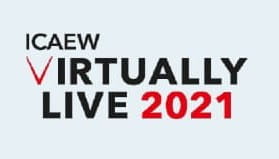National insurance has come a long way since it was first introduced 110 years ago. Has it strayed too far from its original purpose, or does it need to go further?
When national insurance (NI) was first introduced in 1911, it was more of an insurance scheme, of sorts. Employers were required to buy stamps from the post office and affix them to employees’ national insurance cards. These would act as proof that the individual was entitled to benefits once their employment ended.
The unemployment benefit element was administered by government, but health and pension insurance was provided by ‘approved societies’, including friendly societies and some trade unions.
In 1942, at the start of a major turning point in the favour of Allied forces, William Beveridge proposed an expansion of the system in his report, “Social Insurance and Allied Services”. In that report, he proposed providing all benefits through the government, giving citizens security against the ‘five major ills’ that he identified as plaguing society: disease, want, ignorance, squalor, and idleness. Beveridge’s ideas were gradually introduced between 1944 and 1948, with Clement Atlee’s Labour government bringing in the welfare state as we know it today.
As the decades went on, demand for services funded by national insurance started to outstrip contributions. In 1975, a system of income-related contributions was introduced, resulting in a national insurance contributions (NIC) system that operated in much the same way as income tax.
As income tax rates reduced in the 1980s, the scope and rates of NI began to expand. In 2015, the Office of Tax Simplification, acknowledged that while income tax and national insurance are different deductions with different origins, they have evolved into something similar to each other. It proposed aligning the two further, in particular altering NIC.
Nothing really came of this; in reality, it was a much more complicated and politically dangerous task than it may have seemed at first glance. For one thing, while income tax and NIC are similar at a superficial level, the way that NIC is used is still distinct.
“It's a contributory system,” says Peter Bickley, a Technical Manager for ICAEW’s Tax Faculty. “It is different from income tax, because of that. It is largely accounted for separately in the National Insurance Fund.”
It is accounted for separately because NI is somewhat hypothecated and can only be spent on a specific selection of services, such as pensions and certain welfare benefits. Some NIC is used to help fund the NHS and is not accounted for in the National Insurance Fund.
Employers' national insurance also acts as almost a levy on payroll. Employers must national insurance, plus collect employee NIC. The self-employed pay their NIC at a lower rate through Class two and Class four NIC, which isn’t contributory. “Class four is effectively an extra tax on the self-employed that goes into the National Insurance Fund,” says Bickley.
The most recent report to tackle national insurance was the Taylor Review in 2017, which looked into modern working practices. At ICAEW’s behest, Matthew Taylor looked at the disparity between employed and self-employed NIC; a major incentive for unscrupulous business to hire contractors in an attempt to avoid employer NIC payments.
Taylor concluded that rates of employed and self-employed NIC should line up more closely with each other to discourage businesses employers from using contractors in place of employees. This recommendation was agreed by the government in its Good Work Plan published in December 2018 [see recommendation 26] but only in terms of the disparate costs of access to contributory benefits which the government said it had no plans to revisit.
ICAEW took consideration of the future of NIC a little further with its paper, ‘Income tax and NIC – four options: a hard choice’. It broke down the various directions that NIC could be taken in relation to income tax:
- merge: NIC and income tax become one;
- manage: the current system could be improved;
- demerge: NIC could go back to its roots; or
- make do: it could be left as is.
When these measures were discussed in workshops comprising Chartered Accountants, they favoured the ‘manage’ option. Other measures considered included reintroducing an ‘investment income surcharge’, broadening the scope of NIC to include investment income and taxing ‘close company’ dividends and/or unincorporated businesses under separate tax rules and rates, much as savings and dividends income are treated today.
In contrast, the workshops comprising the general public were more in favour of demerging NIC and income tax, an option that appeals to people’s ideas of how the welfare state should work. A full merger is very unlikely to happen says Bickley because it’s likely to be unpopular.
“If you merge national insurance and income tax, you’d probably have to increase the income tax basic rate substantially. No government will want to be seen to be putting up the basic rate of income tax,” says Bickley.
It seems likely that some degree of management will need to be done to bring NIC in line with modern working practices. At the very least, self-employed contributions should increase to be closer to those of employed people. In 2015 and 2017, there was a lack of consensus as to how the issues around NIC should be addressed. We still don’t have a consensus about the direction that NIC should take in relation to income tax, but that shouldn’t stop the government thinking about how to remove distortions created by NIC in the world of work.
Future of Tax
As HMRC launches its review of the system that underpins the tax system, we take a look at the pressing issues and challenges.

- TAFR gets real with consultation on basis period reform
- HMRC needs more resource to rebuild the UK's tax system
- Identification and registration of taxpayers must be a priority, says ICAEW
- In-year tax estimates wouldn’t be an accurate basis for payment, warns ICAEW
- Join up HMRC systems to provide a better taxpayer experience, says ICAEW



